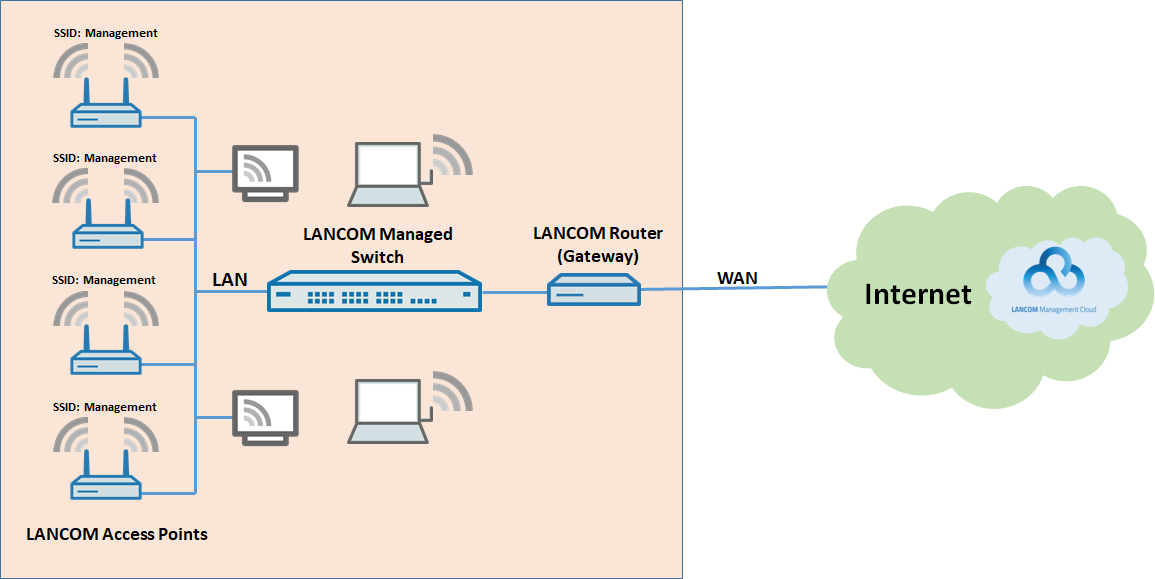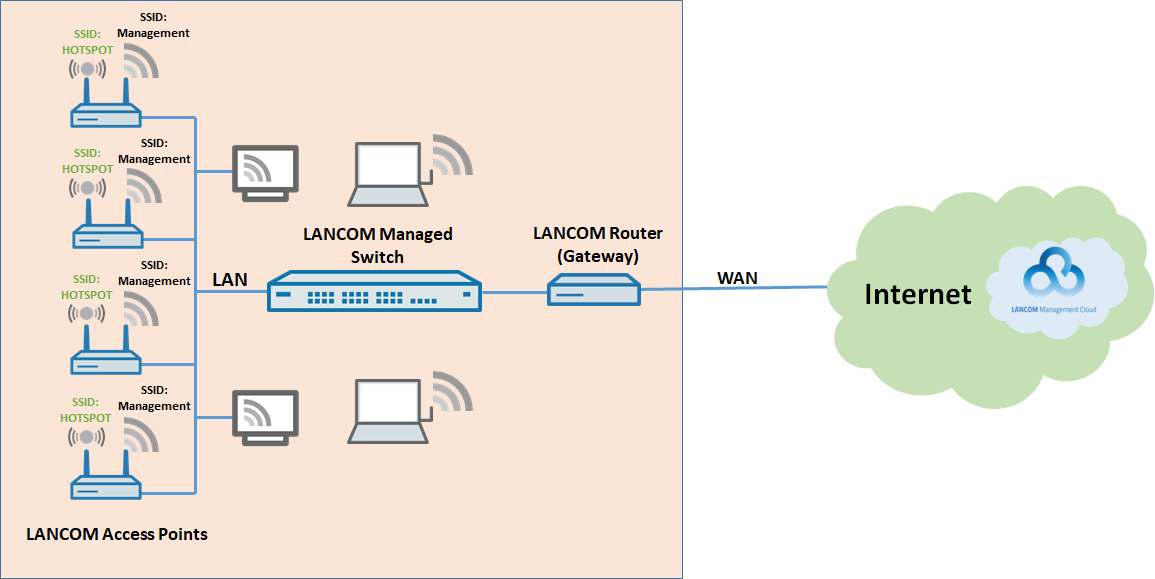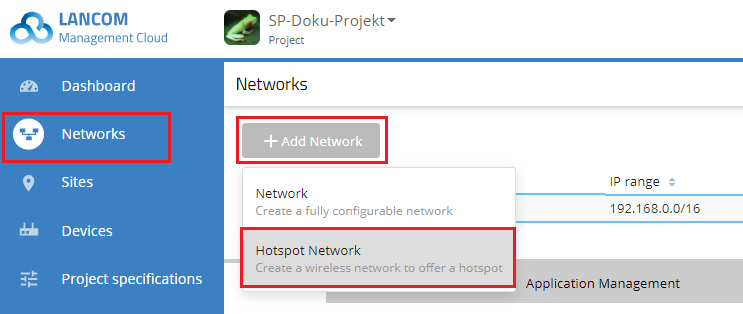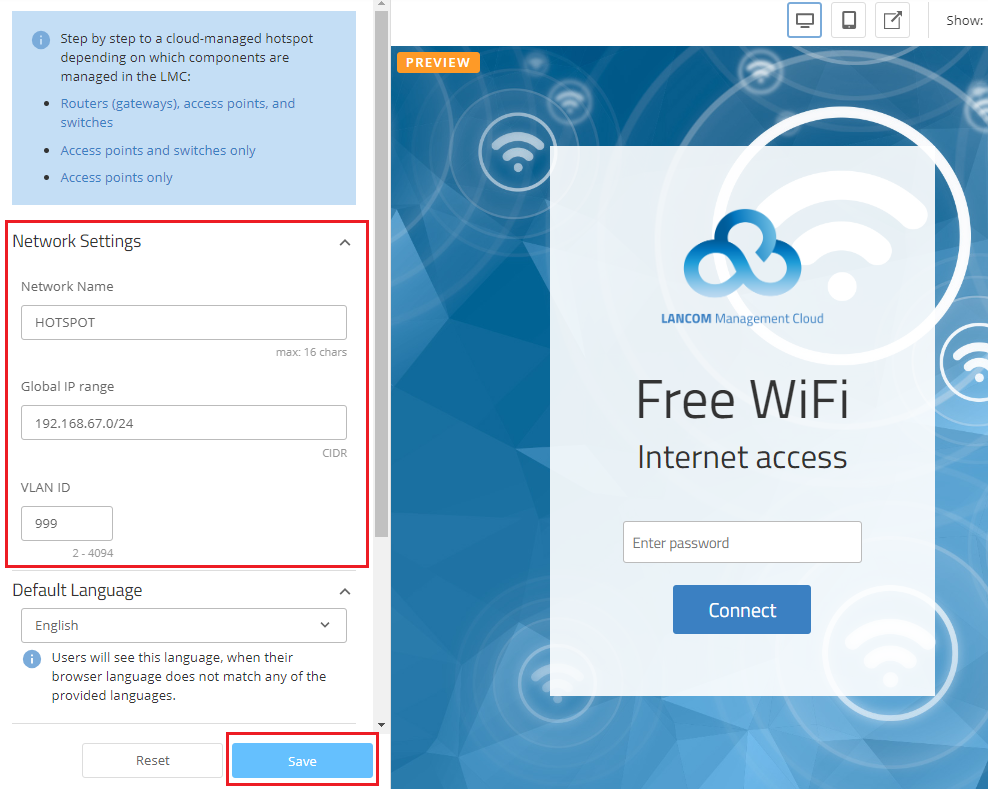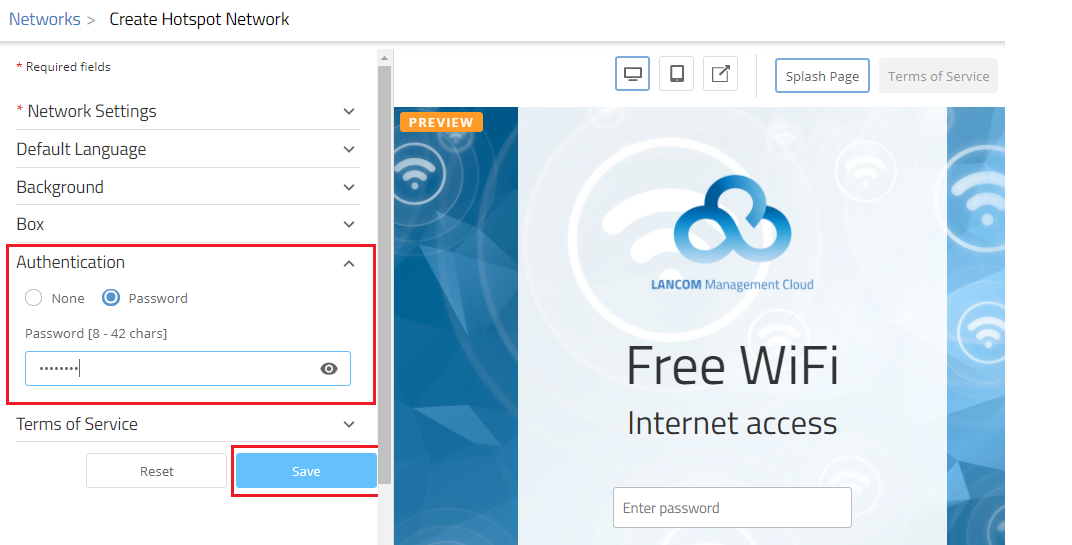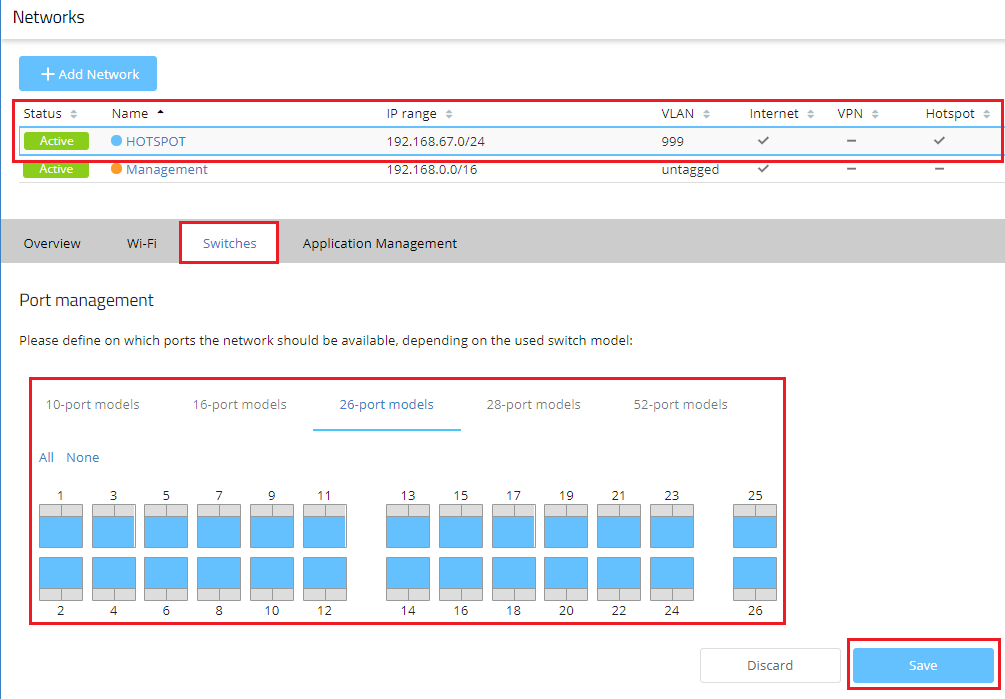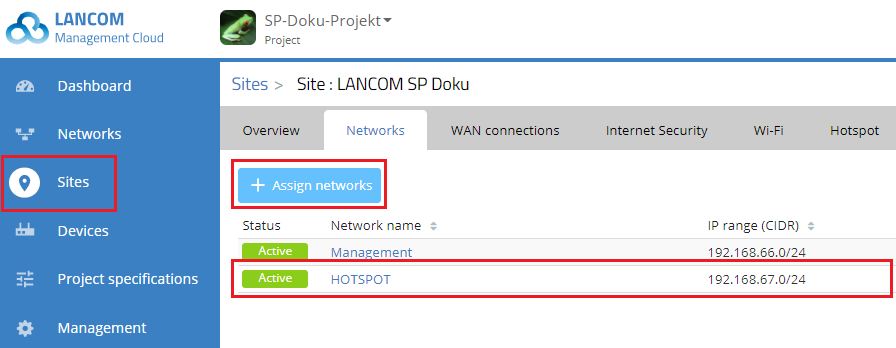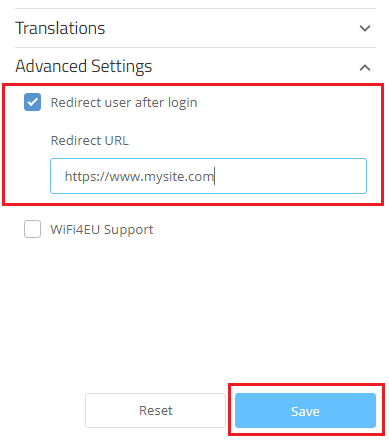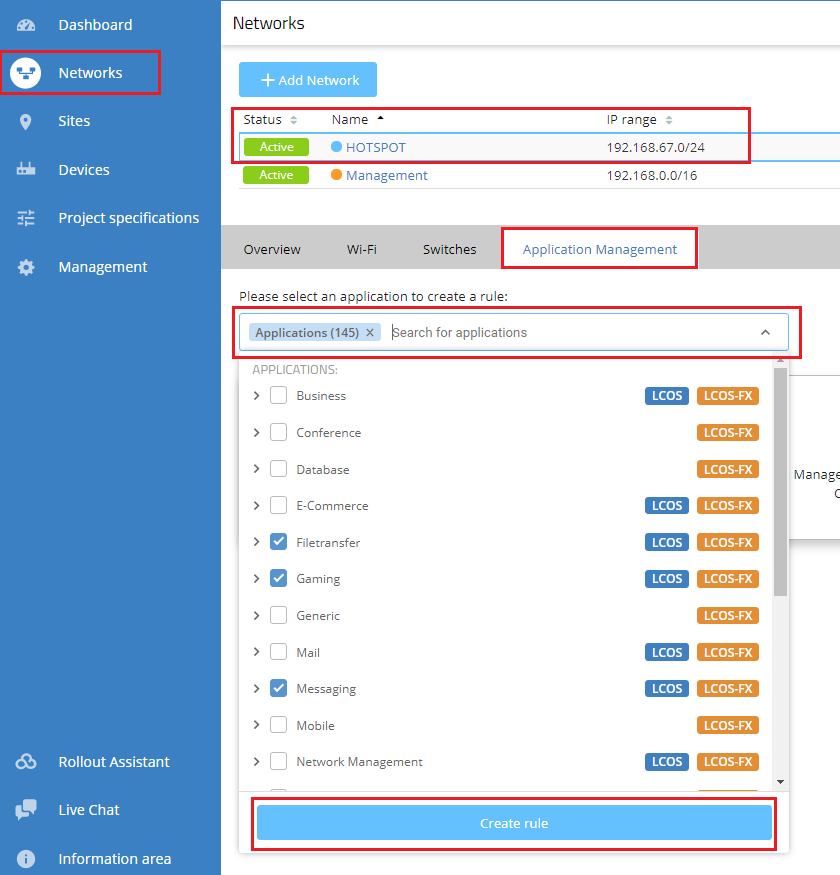Description:
This document describes how to configure a cloud-managed hotspot with the LANCOM Management Cloud (LMC).
Requirements:
- LCOS as of version 10.42 or LCOS LX as of version 5.30 (download current version)
- Access to the LANCOM Management Cloud (subject to charge)
- Web browser
- The procedures described below are based on a fully functional network scenario managed by the LMC.
- All components used in this configuration example are managed by the LMC.
How to configure a cloud-managed hotspot where the gateway router is not managed by the LMC is described in this knowledge base article.
How to configure a cloud-managed hotspot where only the LANCOM access points are managed by the LMC is described in this knowledge base article.
Scenario:
The local network of a company is operated entirely with LANCOM devices and managed and configured by the LANCOM Management Cloud.
- A LANCOM router is operated as a gateway, which, among other things, also provides the Internet connection.
- A local network is available to all employees.
- A LANCOM managed access switch is used as the central network component to which all other LANCOM devices are connected.
The existing scenario should be upgraded with Wi-Fi access for guests:
- An additional SSID should be broadcast by all access points (e.g. “HOTSPOT”).
- The guest Wi-Fi should be in its own local network that has no access to the company's management network and that offers only Internet access to users.
- There should be no communication between the Wi-Fi clients in the guest Wi-Fi.
- Optionally there should be a limit on the bandwidth available for Internet access.
Procedure:
1) Open your LMC project and navigate to the menu Networks.
2) Click Add network → Hotspot network.
3) Use the Network settings to adjust the basic technical settings for the new hotspot network:
- SSID name: Enter a name for the broadcast SSID (e.g. HOTSPOT). This can be max. 16 characters long.
- Global IP range: This field specifies the IP address range used by the hotspot network. Enter the IP address range in CIDR notation (e.g. 192.168.67.0/24).
- VLAN ID: The VLAN ID is set to 999 by default. You can change this as you wish (in the range from VLAN ID 2 to 4094).
You can also set up this scenario if your gateway router is aware of the hotspot network but is not a LANCOM router and is not managed by the LMC. In this case you need to activate the option “For the hotspot network no router (gateway) is managed by the LMC” in the Advanced settings.
- With this option enabled, the hotspot data traffic is forwarded to the configured VLAN. Third-party devices have to be configured so that they can handle this VLAN.
4) At this point you can save the settings of the hotspot network.
5) The remainder of the configuration areas are for optional adjustments to the appearance and functionality.
- If, for example, you want access to the hotspot network to require password authentication, change the function in the Authentication area to Password and assign a global password for to accessing the hotspot.
- If you want to use voucher authentication, select the option provided. For a description of the configuration, see this Knowledge Base article.
- It is not possible to use separate access credentials for individual users.
- You can define the time after which a user is automatically logged out of the hotspot.
6) Save your settings.
7) In the Switches section you specify the switch ports used to carry the new hotspot network. The selected ports are shown in the color of the hotspot network.
8) Then click on Save.
If your network does not use a switch and the access points are directly connected to the LANCOM router by Ethernet cable, you can skip this step of the configuration.
9) Navigate to the menu Sites → Networks and select the site you are configuring.
10) Click the button Assign networks and select the hotspot network from the displayed list.
11) In the final step, the new network configuration is rolled out to all devices on your local network.
- Switch to the Devices menu and roll out the configuration to all devices with a configuration status shown as “Outdated” since configuring the hotspot. This may take some time depending on the number of devices involved.
12) This concludes the configuration of the cloud-managed hotspot. Your Wi-Fi will now broadcast a new SSID with the name of your hotspot network. As soon as you connect to this SSID, you will be asked to login to the network.
13) The following steps are optional adjustments.
Optional adjustments to the hotspot network:
Set up redirection to a website of your choice:
1) Switch to the Networks menu and click on the name of the hotspot network.
2) Open the Advanced Settings tab.
3) Activate the option Redirect user after login and enter the address to which the user is to be forwarded after successful login in the Redirect URL field.
4) Then click on Save.
5) The change must now be rolled out to all devices in your local network (see step 11).
Limit the bandwidth available to the hotspot:
1) Navigate to the menu Networks and select the hotspot network.
2) Click the Wi-Fi tab.
3) Click on the SSID name of the network to open its settings. You can set the values for the maximum available bandwidth in the transmit and receive directions (in kbps).
4) Save your settings and roll out the new configuration to your devices (see step 11).
Use application management to control the applications and/or protocols allowed on the hotspot:
1) Navigate to the menu Networks and select the hotspot network.
2) Click the Application Management tab.
3) From the drop-down menu you can select the application type or even individual applications that should be blocked on the network. The types of blocking differ depending on the LCOS firmware type used (LCOS, LCOS LX or LCOS FX). It is also possible to prevent the use of individual communication protocols on the network (e.g. FTP).
4) After making your selection, click Create rule.
5) Save your settings and roll out the new configuration to your devices (see step 11).
